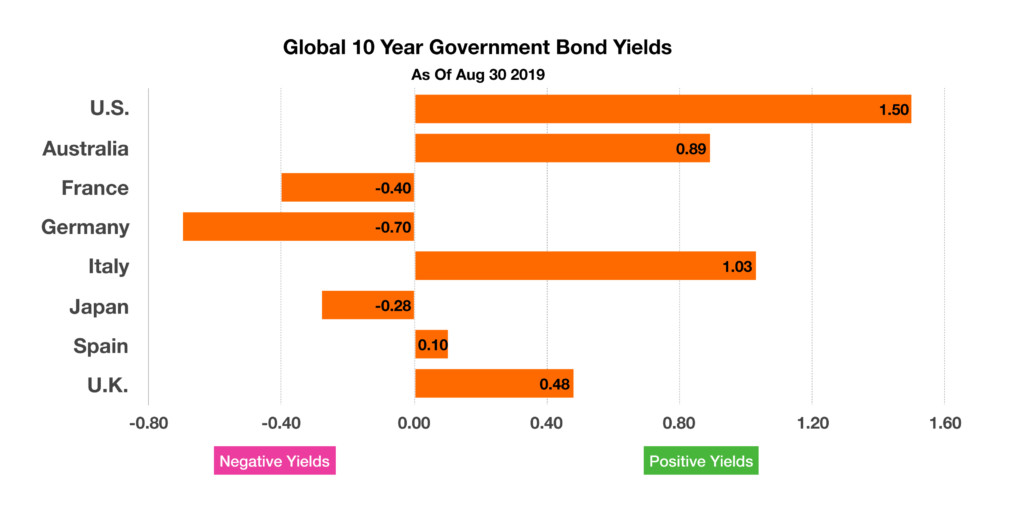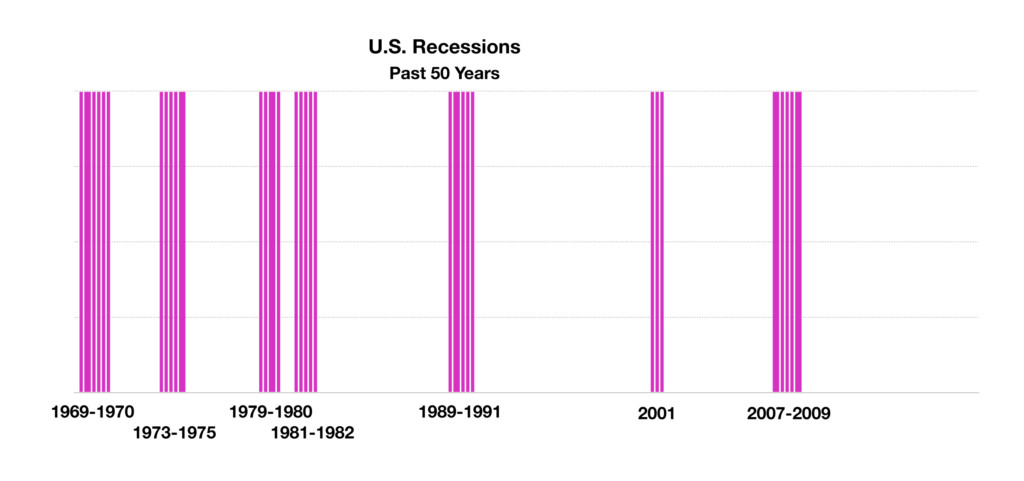
Joseph Schw
Stephen Dygos, CFP® 612.355.4364
Benjamin Wheeler, CFP® 612.355.4363
Paul Wilson 612.355.4366
www.sdwia.com
Stock Indices:
| Dow Jones | 42,270 |
| S&P 500 | 5,911 |
| Nasdaq | 19,113 |
Bond Sector Yields:
| 2 Yr Treasury | 3.89% |
| 10 Yr Treasury | 4.41% |
| 10 Yr Municipal | 3.31% |
| High Yield | 7.26% |
YTD Market Returns:
| Dow Jones | -0.64% |
| S&P 500 | 0.51% |
| Nasdaq | -1.02% |
| MSCI-EAFE | 17.30% |
| MSCI-Europe | 21.20% |
| MSCI-Pacific | 10.50% |
| MSCI-Emg Mkt | 8.90% |
| US Agg Bond | 2.45% |
| US Corp Bond | 2.26% |
| US Gov’t Bond | 2.44% |
Commodity Prices:
| Gold | 3,313 |
| Silver | 33.07 |
| Oil (WTI) | 60.79 |
Currencies:
| Dollar / Euro | 1.13 |
| Dollar / Pound | 1.34 |
| Yen / Dollar | 144.85 |
| Canadian /Dollar | 0.72 |
September 2019
Macro Overview
A 15% tariff was imposed on roughly 40% of consumer products imported from China effective September 1st, affecting over $100 billion worth of annual imports. An additional slew of products from China is scheduled to be assessed a 15% tariff on December 15th, applicable to nearly everything imported from China by year end.
The announcement of additional tariffs on Chinese imports into the U.S. caused prolonged uncertainty surrounding the extent of the ongoing trade tensions. Since tariffs are dictated by trade policy, some believe that a potential delay or reversal of a portion of the scheduled tariffs is possible.
China let their currency, the yuan, fall in response to the U.S. decision to apply additional tariffs, thus weakening the Chinese currency and making Chinese exports more competitive internationally. Concurrently, the U.S. Treasury Department designated China as a currency manipulator in early August, a designation that addresses potential unfair trade practices. China’s currency fell 3.7% against the U.S. dollar in August, the single largest monthly drop in 25 years.
The Congressional Budget Office (CBO) estimates that the U.S. budget deficit will surpass $1 trillion in 2020 and continue to expand to over $1.3 trillion by 2029. The ten year projection is based on increasing tax revenue but with slower GDP growth of 1.8% per year.
Stocks have been resilient since the beginning of the year despite ongoing tariff threats, slowing global economy, softening earnings projections, and uncertainty surrounding international debt issues. All eleven sectors of the S&P 500 Index were still positive year to date as of the end of August.
Recession fears fueled volatility and uncertainty as bond yields continued to fall in August. Economists view higher short-term rates than long term rates, also known as an inverted yield curve, as a signal of slowing economic growth in the future. Any validation of an upcoming recession is subjective with expectations varying from economist to economist.
Global yields continued their decline in August with 30-year German government bond yields falling below 0% while the 30-year U.S. Treasury bond yield dipped below 2% for the first time on record. Roughly $16 trillion worth of global bonds now carry negative yields, of historical significance in the fixed income markets.
Argentina is close to defaulting on its government debt, owing approximately $50 billion of long-term debt primarily held by foreign investors throughout the world. Argentina’s currency, the peso, fell 25% against the U.S. dollar in August, the steepest drop since its last currency crisis.
Sources: Commerce Dept., U.S. Treasury, Federal Reserve, CBO, Bloomberg, S&P
Volatile Month For Stocks – Equity Overview
Despite the volatility in August, all eleven sectors of the S&P 500 were still positive YTD as of Aug 30th, with the technology, real estate and consumer discretionary sectors leading.
Earnings moved to the forefront of concerns for equities as the effect of Fed rate cuts dissipated with fewer cuts expected. Global growth headwinds along with international debt issues contributed to market uncertainty.
Equity analysts are following three primary market risks influencing U.S. stock prices: effects of trade tensions; slide in earnings estimates; and less Fed rate cuts than anticipated.
Sources: S&P, Bloomberg
Bond Yields Continue To Decline – Fixed Income Update
Bond prices continued to escalate in August, causing bond yields across most bond sectors to fall. The bond market has been the primary identifier of recessionary threats for decades, as short-term bond yields rise above longer term bond yields. Long-term bonds have been among one of the best performing asset classes year to date concurrently with equities, an anomaly in the financial markets.
The yield on the 10-year Treasury bond fell to 1.50% in August, its largest monthly yield drop since 2011. The yield on the 30-year Treasury bond fell below 2% in August, confirming dismal economic long-term growth.
The U.S. Treasury is considering the issuance of 100-year Treasury bonds in order to take advantage of the current ultra-low rate environment. Other countries have already taken advantage of the global low rate environment, with Austria, Belgium and Ireland issuing century bonds over the past few years.
Sources: Treasury Department, Eurostat, Bloomberg
U.S. Treasuries Remain Attractive – Global Fixed Income Overview
Even as the 10-year Treasury yield fell below 1.5% in August, it is still offering a more attractive yield than most other developed country government bonds. Yields for 10-year government bonds in Germany and Japan yielded -0.69% and -0.27% respectively. Such negative yields mean that investors are basically paying the governments of Germany and Japan to hold on to their funds.
International investors not only pursue the best yields possible, they also seek the safest debt possible. The U.S. continues to offer the most transparent and liquid debt worldwide of any country or company. U.S. Treasury bonds are also held for trading purposes and for currency control. If too many bonds are bought, then lower rates may weaken the currency, a trade strategy utilized by countries to stabilize or alter exports.
Countries whose 10-year government bond yields were below 0% as of the end of August include France, Germany and Japan.
Source: Bloomberg, U.S. Treasury
U.S. Recessions – Historical Note
Historians and economists claim that there have been 47 recessions in the United States dating back to the Articles of Confederation, which was ratified in 1781. The duration and intensity of each recession has been unique, with various factors affecting economic conditions contingent on current circumstances.
Ironically, the recession during the early 80s from 1980 through 1982 was driven by inflation and rising interest rates creating an expensive and restrictive environment for consumers and businesses. Conversely, economists currently view any probable recession driven by an ultra-low rate environment and minimal inflation, believed to be a result of excessive stimulus created by the Federal Reserve and dismal economic growth projections.
Modern recessions occurring in the 19th century have resulted from financial crises and market driven events, while recessions that occurred in the 1800s were primarily driven by war and the weather due to the dependence on agriculture.
Talk of an upcoming recession in the news has been a focal discussion as low rates and weakening economic indicators create an argument for a recessionary environment. Economists and analysts see recessions as an economic cycle driven by expansions and contractions.
Sources: Federal Reserve; fred.stlouisfed.org/series/JHDUSRGDPBR


